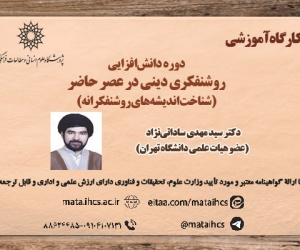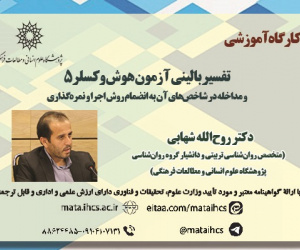میراث ادب دری: منظر ایرانی شرق (مقاله علمی وزارت علوم)
درجه علمی: نشریه علمی (وزارت علوم)
آرشیو
چکیده
سیزدهمین سال انتشار پیاپی فصل نامه دانشگاهی هنر و تمدن شرق را اینک در پیش رو داریم. در سیزده سالی که گذشت، کوشش مدیریت، گروه دبیران و نویسندگان هنر و تمدن شرق بر این بوده است که استوار بر شالوده های تاریخی و باستان شناختی، دریچه ای ایران شناختی به افق شرق فرهنگی بگشایند: این که از پیدایش و پرورش مفهوم ایران شهر و واژه ایران و آگاهی تاریخی ایرانی بیش از دو هزاره می گذرد، واقعیتی است تاریخی؛ بدین معنا که از روزگار ساسانیان تا به امروز، در سرزمینی پهناور از غرب آسیا و در همسایگی مرزهای فرهنگی غرب که تمدن های کهن سال یونان و روم پیشامسیحی و سپس بیزانس مسیحی آن را نمایندگی می کردند، مردمانی زیسته و بالیده اند که خویشتن را ایرانی دانسته اند؛ از مزار خرداد پور اورمزدآفرید که زندگی اش در قسطنطنیه بیزانس به پایان آمد (Nyberg, 1968) تا پایان ایلخانان، به نوشته «نزهت القلوب» حمدا... مستوفی قزوینی، سرزمین های میانه رودهای فرات و سیردریا و دربند قفقازیه تا خلیج فارس زیستگاه مردمانی بود که نسبت به هویت ایرانی خویش آگاهی تاریخی داشتند؛ برای نمونه، حتی سالیان سال پس از ساسانیان، شرف الدین کرد بدلیسی (1860) وقتی که به سفارش سلطان محمد سوم عثمانی کتاب «شرف نامه» را درباره تاریخ و تبار مردمان کردستان می نوشت، به نسب ساسانی پدران خویش اشاره دارد؛ باز آن که تاریخ سده های اسلامی ایران گواه بازاندیشی حکمت و فرهنگ ساسانیان است: حکمت خسروانی شیخ شهاب الدین سهروردی که از آذرآبادگان برخاست و به زبان فارسی ماندگار گشت (Corbin, 1971) و یا در نمونه ای دیگر، عصر خواجه نصیرالدین طوسی هر چند با یورش مرگبار مغولان به خراسان آغاز شد، اما پایان آن را خیزش فرهنگ ایرانی عصر خواجه رشیدالدین فضل ا... رقم زد که از ساسانیان سرمشق می گرفت؛ وانگهی همین پرسش شمس تبریزی که «زبان پارسی را چه شده است؟ بدین لطیفی و خوبی!» گفتمان دری را چونان زبان مدنیت ایرانی برکشید و با سنت شاهنامه نویسی دربار تبریز ایلخانی و پارسی نویسان ربع رشیدی پرورش یافت (Ajorloo, 2018) و البته اگر از بازتاب خاطره ایوان کسری در چکامه خاقانی شروانی و صفه مسجد علی شاه تبریزی تا واپسین ایلخان مغول یاد کنیم که خویشتن را انوشیروان عادل لقب داد و یادمان های فتح علی شاه قاجار در کنار نقش برجسته های شاهنشاهان ساسانی در ری و کرمانشاه را نیک بنگریم، همگی اندک نمونه هایی از پر شمار بن مایه های ادبی و تاریخی و باستان شناختی گواه بر پیوستگی اندیشه ایران شهری ساسانیان هستند. دوره ایلخانان روزگار گسترش زبان ادبی و دیوانی فارسی به بیرون از مرزهای ایران بوده است: ابن بطوطه که فارسی را در هندوستان سده هشتم آموخته بود، آن را زبان دیوانی هندوستان و زبان بازرگانان چین و راه ابریشم معرفی کرده است؛ کمااین که به نوشته «مقدمه» ابن خلدون، دیگر اندیشمند عصر خواجه رشیدالدین، ایرانیان بانیان گسترش صنعت و شهرنشینی شرق بودند.The legacy of Dari literature: An Iranian landscape of the Orient
The 13th anniversary of JACO is approaching. During these years, the editorial board of JACO as well as its authors made their best efforts to open an Iranian window to the cultural horizon of the Orient based on literary, history and archaeology. Historically, the development of the idea of Iranshahr, the word of Iran, and Iranian historical consciousness/ self-awareness emerged more than two millennia ago. Since the Sassanids, in W. Asia, next to the cultural borders of the Occident, represented by ancient pre-Christian Classical civilizations and then Christian Byzantium, people who considered themselves Iranian have lived and succeeded. Both archaeologically and historically, for instance, from the epitaph of Khordad Pour Ormazdafarid, whose life ended in Byzantine Constantinople (Nyberg, 1968), to the Nuzhat al-Qulūb composed by H. Mustawfi of Qazvin, by the end of Ilkhanids, such a fact should be realized that lands between the Euphrates and the Jaxartes and the Caucasian Darband up to the Persian Gulf were inhabited by people who were aware of their Iranian identity. It seems noticeable, many years after the fall of the Sassanids, when Sharaf al-Din Kurd Bidlisi (1860) wrote his book of Scheref Nameh on the history and descent of the Kurdish people by the order of Ottoman Sultan Muhammad III, he mentioned the Sassanid lineage of his fathers. In addition, the Islamic history of Iran verifies the rethinking of Sassanid sage and culture: Hekmat-e Khosrowani conceptualized by Shaykh Shahab al-Din Suhrawardy of Azerbaijan, whose metaphysical works are in Persian (Corbin, 1971). Another instance comes from the Age of Khwaja Nasir al-Din Tousi: although this Age commenced by the deadly invasion of Khorasan by the Mongols, it evolved to the renaissance movement of Iranian culture during the Age of Khwaja Rashid al-Din. This movement was inspired by the Sassanid Iran. In these times, as Shams Tabrizi asked, “What had happened to the Persian language? It is quite gentle and elegant!” the discourse of Dari was promoted in Iranian civilization. Meanwhile, the Shahnameh tradition and Persian letters were developed in the Ilkhanid court of Tabriz and Rab’-e Rashidi (Ajorloo, 2018). In addition to the poems of Khaghani of Shirvan, inspired by the legacy of Ctesiphon, the Arch of Alishah and the last Mongol Ilkhan who nick-named himself as Anushiravan the Fair, if one mentions the relives of Fath Ali Shah the Qajar beside the bas relives of Sassanid kings in Kermanshah and Ray, all of these should be noted as few samples from plenteous literary, historical and archaeological sources verify the continuous Sassanid idea of Iranshahr. The Ilkhanids should be regarded as the flourishing years of the Persian language, both literary and officially, out of Iran: Ibn Battuta could learn Persian in 14th CE India. He noted that Persian was the language of the Indian court and of merchants who were trading in China and across the Silk Road. Additionally, according to Ibn-Khaldun, another sage from the Age of Khawaja Rashid al-Din, urban and industries were developed in the Orient by the Iranians.







